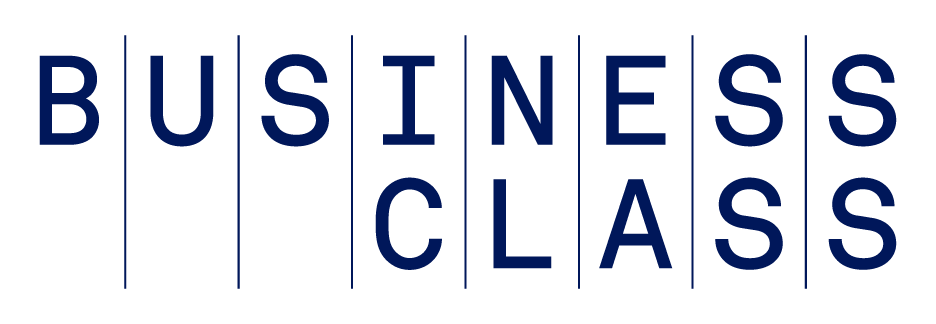When it comes to setting prices, the “right” answer depends on countless factors, including the type of good or service, the customer base, and what the competition is doing. Some entrepreneurs, for instance, start with low prices to penetrate the market. Others price high and slash costs over time. Some price according to the good’s perceived value, while others find success by mixing several pricing strategies. There’s no one-size-fits-all approach to pricing, so businesses should consider thinking deeply about how to optimize prices and plan to regularly reassess strategies over time.
What Is a Pricing Strategy?
A pricing strategy is the approach a business takes to optimally price its products or services. The goal is to find a price that will achieve the pricing objective the business hopes to achieve. The pricing objective could be to maximize profit, increase market share, draw in new customers, discourage competition, or even maintain the status quo. The pricing strategy is what the business will do to achieve the established pricing objective.
Pricing strategies generally consider customer needs and their willingness to pay, competitor pricing, market conditions, market trends, and more. It’s a delicate balancing act, but, when done correctly, a strategic approach to pricing can greatly benefit the bottom line.
These seven steps could help a business achieve the right pricing strategy for its needs.
1. Define Your Pricing Objective
A pricing strategy starts with the pricing objective. Think about what goals you want to achieve through your pricing strategy. It can help to keep these three categories in mind when defining a pricing objective:
- Overall business goals: Pricing should align with both the short- and long-term goals of the business. Whether the company wants to penetrate a new market, consider introducing a new product, or establish itself as a premium brand, overall goals will shape the objective and significantly influence the pricing strategy. A premium brand might opt for a premium pricing strategy, for instance.
- Capital resources: The company’s financial situation can impact its pricing. If resources are limited, for example, the company’s pricing objective might be to simply stay afloat. In turn, the company might price goods to cover production costs with a modest markup.
- Expertise: A company’s strengths and capabilities can influence its pricing objectives. For example, a company that excels in product innovation may set its goal to successfully discourage competition. An objectively “better” product may be able to command a higher price and maximize revenue.
2. Understand Your Customers’ Needs and the Value You Offer
Value-based pricing strategies link pricing potential to customers’ perceived value of the offering, rather than market averages or the cost to produce it. This requires a deep understanding of customers’ needs, preferences, and willingness to pay.
Identify your target audience’s pain points by conducting market research and getting customer feedback. The more useful the product or service, the higher the price it usually can command. That said, it’s also important to make sure your customers actually recognize the value of your offering. Clever marketing strategies and thoughtful differentiation can help them understand why your product offers the best bang for their buck – even if the price is a bit higher than that of competitors.
3. Evaluate Your Competitive Strengths and Weaknesses
If your business’ offerings are comparable to what else is on the market, you may want to leverage a competitive pricing strategy. Common in saturated markets with similar offerings, this approach is used to set prices based on what competitors are charging. Consider what you can offer that competitors can’t. What sets your product or service apart? How can you convince customers to switch or stick to your product? If your goods or services are superior, you may be able to increase prices without losing customers. If they’re very similar, pricing a bit lower can bring in more customers – but this can also lead to price wars and eventually erode profit margins.
It can also help to emphasize a business strength, such as a streamlined production method that allows you to offer more competitive prices without hurting revenue, or to address a competitor’s weakness. A new entrepreneur may be better suited to capitalize on unmet demand for customizable and unique goods than an established company with less production flexibility, allowing the new business to charge higher prices while tapping into a hungry market.
4. Understand How Prices Relate to Customer Behavior
Understanding customer behavior may help businesses set prices in more direct, targeted ways. A penetration pricing strategy involves offering some items for comparatively low prices with the intent of attracting customers and gaining market share. Because this approach can reduce profitability in the short term, prices are typically raised gradually. Or, the company might plan to keep some products low with the hope of upselling when customers are in the door. A good example is a fast-food restaurant offering a dollar menu to lure in customers before pushing higher-profit size upgrades, soft drinks, and desserts.
Other businesses utilize a “high-low” pricing strategy, in which new items are priced high and eventually lowered through discounts, general price decreases, or clearance. This is common in retail – winter coats and boots might cost significantly more in late fall or early winter before appearing on 50% off clearance racks in spring. Customers in need of winter gear may be willing to pay more to get the clothes they need to stay comfortable in the upcoming season, while those who can squeeze one more season out of their boots might wait for a sale.
It's also important to think about your customer base. Are they looking for luxury goods and high-end products? If your product is high-quality, exclusive, or has an upscale reputation, premium pricing could further enhance brand perception. For example, a burrito at a fancy restaurant might cost more than at a fast-food chain even if the ingredients are the same. But premium pricing could limit the customer base to high-income individuals.
Conversely, economy pricing appeals to cost-sensitive consumers through the lowest possible prices. This approach is commonly used for generic or commodity products that rely on high volume to drive profitability – basic household goods that can be found in dollar stores, for instance.
5. Evaluate Costs to Set a Profitable Price
Ideally, an offering’s price should net positive cash flow. Costs that outweigh prices can lead to negative cash flow, which is unsustainable in the long run. Cost-plus pricing strategies calculate the direct costs of producing a product, including raw materials, labor, and overhead (these costs are also known as cost of goods sold, or COGS). A markup is then added to determine a profitable selling price. Some companies can set their markup as a percentage of the product’s cost – say 50% – or as a fixed, predetermined dollar. Premium companies tend to set higher markups than economy companies.
But it’s also important to remember that there are indirect costs not included in COGS, such as rent costs. Here’s a simplified example of how additional costs can also impact a business’s pricing strategy:
Suppose it costs $11 in raw materials, labor, and facility overhead costs for a business to produce and sell a single T-shirt. The business decides on a $4 markup, selling each shirt for $15. But we can’t yet assume that the company will earn $4 on each sale.
Say the business must pay $5,000 a month to rent its storefront. Remember: Rent isn’t included in COGS, so if the business sells 1,000 T-shirts per month, each shirt needs to “contribute” $5 to cover the rent ($5,000 rent / $1,000 shirts = $5 per shirt). With a $4 margin per shirt, the company would actually lose $1 for each sale after accounting for rent.
To prevent negative cash flow, the business either needs to boost its markup by at least $1 to break even, or it needs to sell more T-shirts. For instance, if they sell 5,000 T-shirts in a month, each shirt needs to contribute only $1 toward the rent ($5,000 rent / 5,000 shirts = $1 per shirt). This nets a profit of $3 per shirt ($4 profit – $1 for rent).
6. Adjust Prices Based on Market Trends
Though higher prices often come with higher value, they can also stem from spikes in demand. Trends affect pricing in many ways. For instance, new, state-of-the-art technologies may offer more features and benefits than earlier ones, justifying high initial prices through a pricing strategy called “skimming.” When the first Blu-ray player was released in North America in 2006, the market retail price tag was nearly $1,000 – much higher than the DVD players already on the market. The revenue could have been skimmed from the consumers willing to pay a premium to jump on a hot new trend. As the technology became cheaper to produce and new competitors entered the market, prices dropped to a fraction of the cost in order to capture more price-sensitive customers.
But it’s not just the “next big thing” that shapes demand. Wider market trends, like tariffs, cost of raw materials, and inflation can strongly affect a company’s ability to maintain profit margins. If costs can’t be cut, a business might need to update its pricing strategies to stay profitable.
7. Repeat Until You Get It Right
Not many entrepreneurs get their pricing strategy right on the first try. And even if you do, market trends and consumer preferences can shift at the drop of a hat, meaning you may need to pivot to stay profitable. For example, prices may need to be raised when costs increase, demand rises, or more value is offered. But how businesses choose to change pricing strategies matters.
Customers expect dynamic pricing for some offerings, such as gasoline, fresh produce, hotel rooms, and airline tickets. But for more stable industries, abrupt price changes without notice may meet with resistance. If it’s time to raise prices, notify customers ahead of time. Transparently explaining the rationale can help build customer loyalty, especially if you reiterate the value of your offering.
When in doubt, consider listening to your customers. Reviews and solicited feedback can provide valuable insight into how prices affect the most important part of your business: the people you serve.
The Bottom Line
Pricing strategies are not one-size-fits-all and can be deliberately planned and adjusted to find the right balance between high enough to earn profit and low enough to entice customers. Rather than just dropping prices to stand out, businesses can learn to effectively sell value to differentiate their goods and services from the competition and build long-term success.
FAQs on Pricing Strategy
1. What is the importance of a pricing strategy?
A pricing strategy is important because it allows businesses to charge the right price for their products. The goal is to charge enough to meet revenue goals and make a profit while ensuring that customers feel they are getting fair value for the price.
2. What factors influence a business’ pricing strategy?
Factors that influence a business’ pricing strategy include market segments, customers’ ability to pay, current market conditions, competitors, and more.
3. What are the different types of pricing strategies?
Common types of pricing strategies include:
- Cost-plus pricing.
- Value-based pricing.
- Competitive pricing.
- Price skimming.
- Premium pricing.
- Economy pricing.
- Penetration pricing.
- Dynamic pricing.
Images: Getty
A version of this article was originally published on October 21, 2022.






